I’ve cleaned and dried more bathroom rugs than I can count, for clients and in my own home. I know the stink of a damp mat, the curled rubber edges, and the surprise mildew patch you find too late. Here’s the clear, simple guide you need on how to dry a bathroom rug without damage, odors, or guesswork. I’ll show you what works, what to avoid, and how to get it dry fast while keeping it fresh longer. I’ll share what I’ve learned from real mistakes and real wins, so you can save time and keep your bathroom clean and safe.
:max_bytes(150000):strip_icc()/how-to-wash-a-bathroom-rug-4693505-09-18921091a5e14bacbe24971f60bd7da6.jpg)
What Affects Drying Time
Drying speed is not random. A few factors decide how long it takes.
- Material type. Cotton and microfiber dry faster. Memory foam and thick pile hold water. Rubber-backed rugs need low heat.
- Rug thickness and size. Thick, dense rugs take more time. Larger rugs hold more moisture.
- Backing and stitching. Latex, TPR, and PVC backings are heat sensitive. High heat can crack or crumble them over time.
- Room airflow and humidity. Still, wet air slows everything. Moving dry air speeds drying a lot.
- Water left after washing. A high-speed spin cuts hours off drying time.
Expert safety guidance suggests using low heat for rubber-backed textiles and improving ventilation to prevent mildew growth in bathrooms. The less water you leave in the rug and the more air you move around it, the better.

Quick-Start Checklist
Use this when you need the rug dry today.
- Shake and press. Shake the rug, then press it between two clean towels to pull out water.
- Run an extra spin. Use a washer’s spin-only cycle to remove more moisture.
- Max the airflow. Hang the rug with space on all sides. Turn on a fan or open a window.
- Add dry air. Use a dehumidifier in small bathrooms. It speeds up evaporation.
- Use low heat only. If you tumble dry, choose low heat or air-only, then finish by hanging.
This quick routine prevents most odor and keeps backing in good shape.
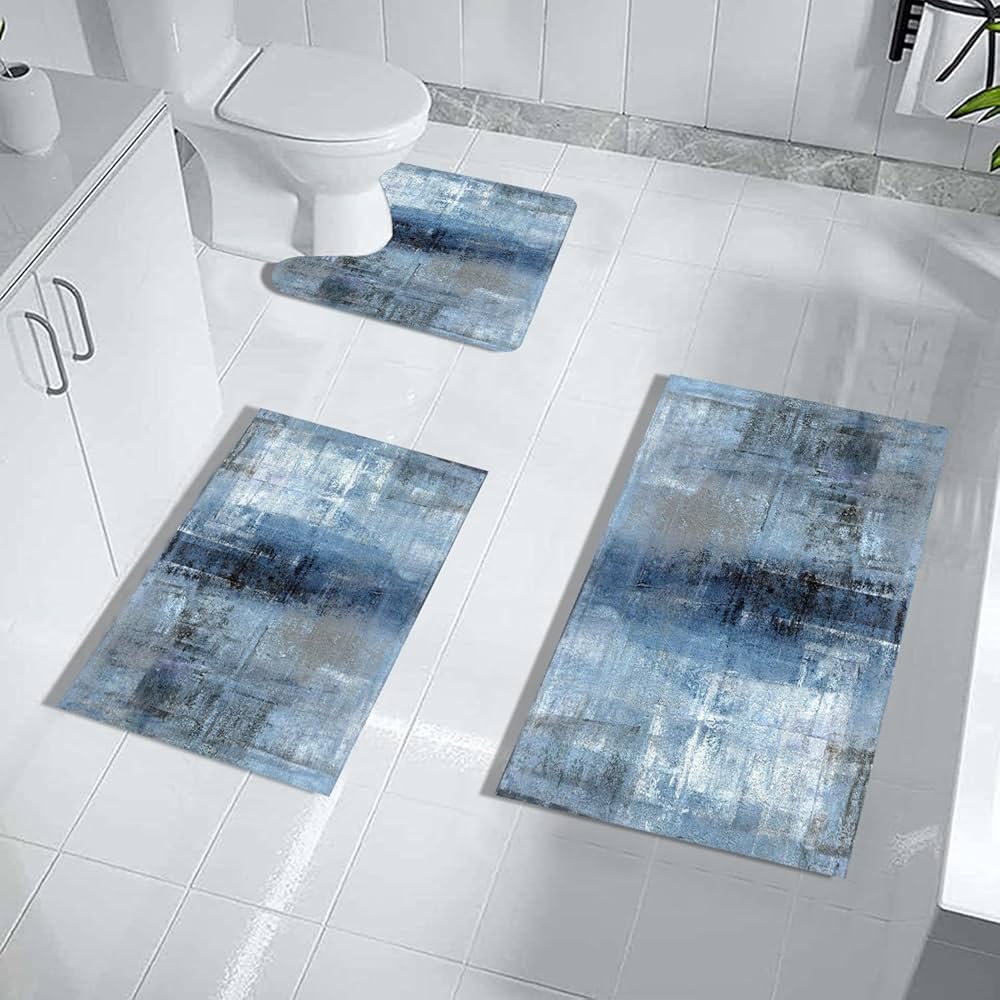
Drying Methods That Work
Here are safe, proven ways to dry different rugs fast.
- Air-drying on a bar or rack. Hang the rug so air hits both sides. Leave at least a hand’s width of space around it. Point a fan at it for best results.
- Towel-press method. Lay the rug flat on a towel. Lay another towel on top. Press or walk gently to transfer moisture. Repeat with dry towels.
- Spin-only cycle. After washing, run a spin-only cycle. For heavy rugs, run it twice. This step can cut drying time by half.
- Low-heat tumble dry. Use low heat or air-only. Add a few clean, dry towels to boost airflow. Check every 15 minutes to protect the backing.
- Dehumidifier boost. Place the rug in a small room with a dehumidifier running. Keep the door closed. This is great in winter or humid climates.
- Sunlight with care. Sun is powerful. A short sun session helps with odor. Do not bake rubber-backed rugs for hours. Rotate and limit time to prevent fading or cracking.
From experience, a fan plus spin-only beats high heat every time. It’s safer and often faster than you think.
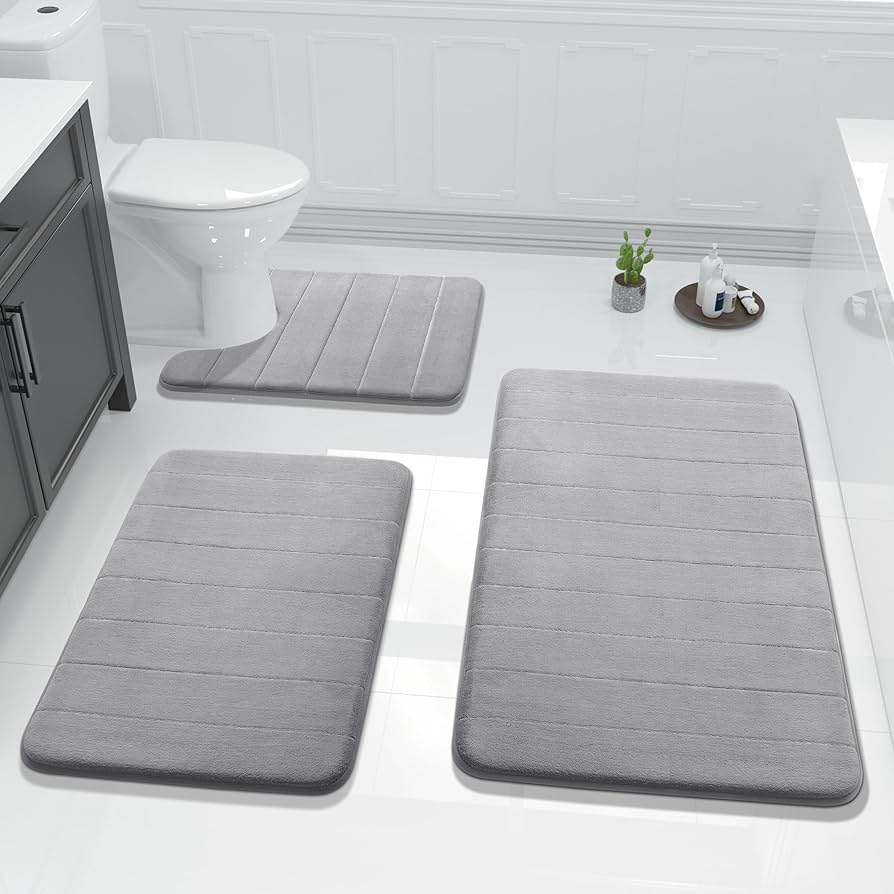
Step-By-Step For Each Rug Type
Follow the steps that match your rug.
Cotton bath rug
- Shake outside. Wash on warm. Run an extra spin.
- Dry on low heat for 15–20 minutes with two dry towels.
- Finish air-drying on a rack until fully dry.
Microfiber rug
- Wash cold or warm, gentle cycle. Extra spin.
- Air-dry with strong airflow or low-heat tumble until slightly damp.
- Lay flat or hang to finish. Avoid high heat to protect fibers.
Memory foam rug
- Hand wash or gentle cycle. Do not wring.
- Press with towels to remove water. Do not twist the foam.
- Air-dry flat with a fan and dehumidifier. Avoid heat that can warp foam.
Rubber- or TPR-backed rug
- Wash cold. Avoid bleach and high heat.
- Extra spin. Tumble on air-only or low heat in short cycles.
- Hang to finish. Check the backing for soft spots or cracks.
I once ruined a great rug by cranking the dryer to high. The backing cracked after two cycles. Since then, I only use low heat and finish with airflow. It lasts much longer.
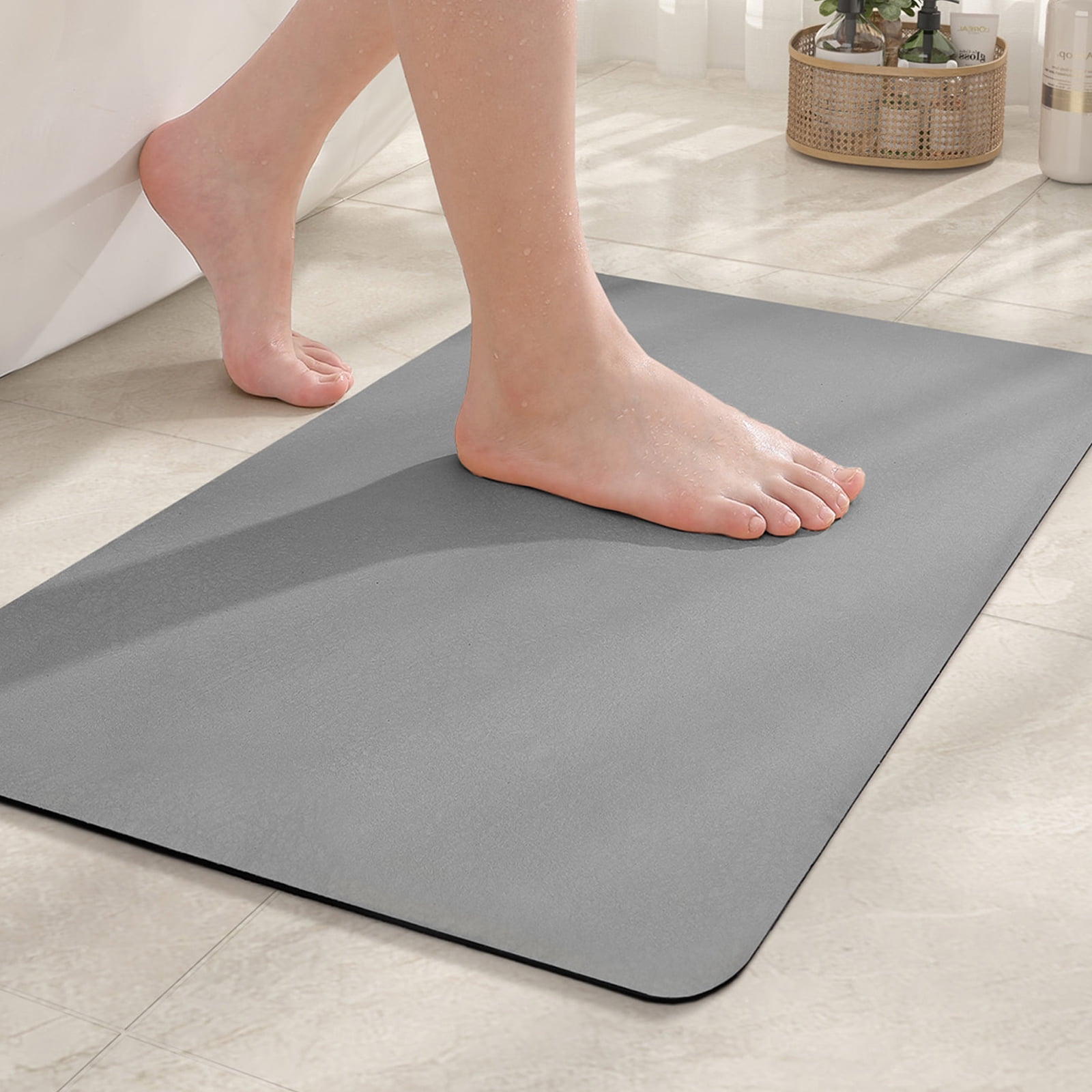
Safety, Temperatures, And Damage Control
Protect your rug and your dryer.
- Heat limits. Many latex and TPR backings can degrade under high heat. Low heat or air-only is safest.
- Lint and airflow. Clean the lint trap before drying. Better airflow equals faster drying.
- Avoid space heaters and radiators. Direct high heat can warp foam and backing and is a fire risk.
- Check for loose edges. If edges curl, press the rug flat while warm, then cool it flat on a counter or floor.
- Floor safety. Never lay a damp rug back on the floor. Moisture trapped under it can grow mildew and cause slip risks.
These steps align with common textile care and home safety recommendations for synthetic backings and moisture control indoors.
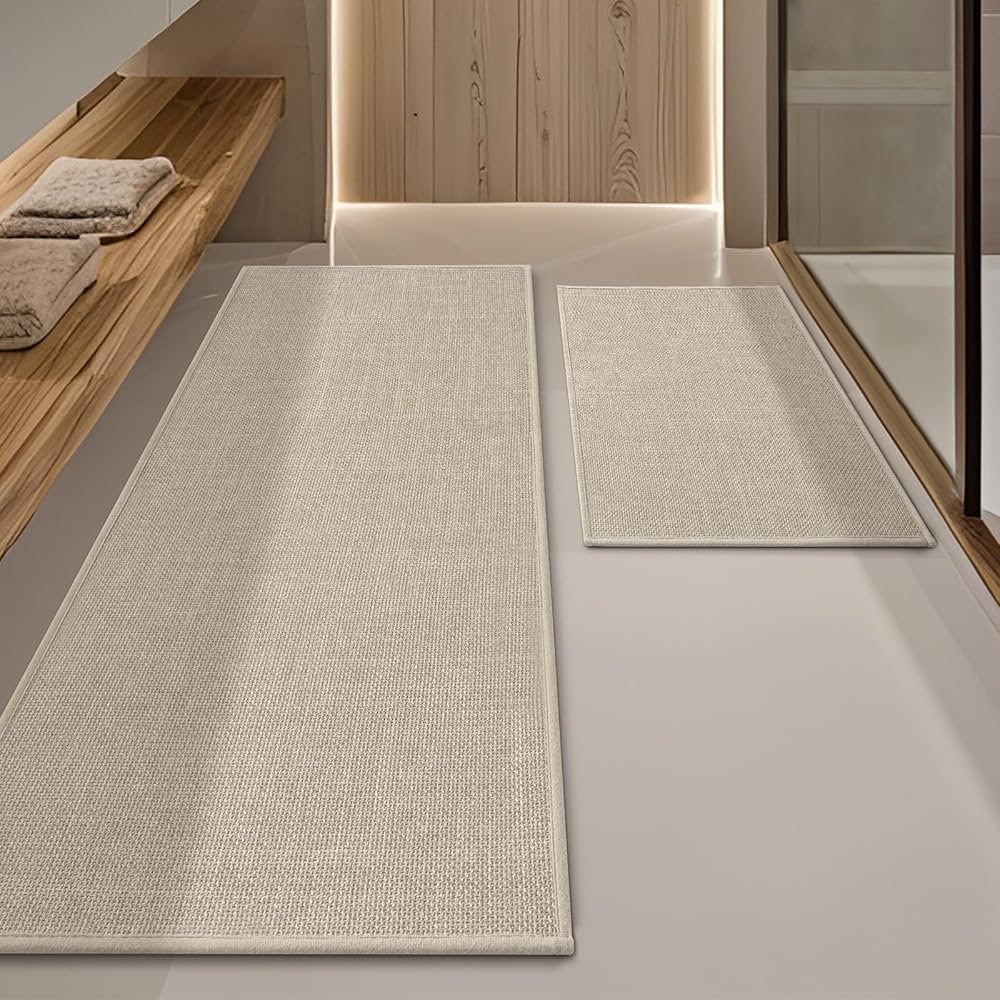
Odor, Mildew, And Hygiene Tips
Wet bathrooms are mold-friendly. Stop odors before they start.
- Dry within 24 hours. Past that, mildew risk jumps.
- Rinse after heavy use. If the rug smells, rinse with a splash of white vinegar, then spin and dry. Vinegar helps neutralize odors.
- Improve bathroom airflow. Run the exhaust fan for 20 minutes after showers.
- Use a drying rotation. Keep two rugs. One down, one drying. Swap every 24–48 hours.
- Deep clean monthly. Wash per label. Add baking soda for odor if the care tag allows.
If a rug smells like a wet dog even after drying, you likely trapped moisture inside. Run a spin-only cycle and use a fan plus dehumidifier to finish.
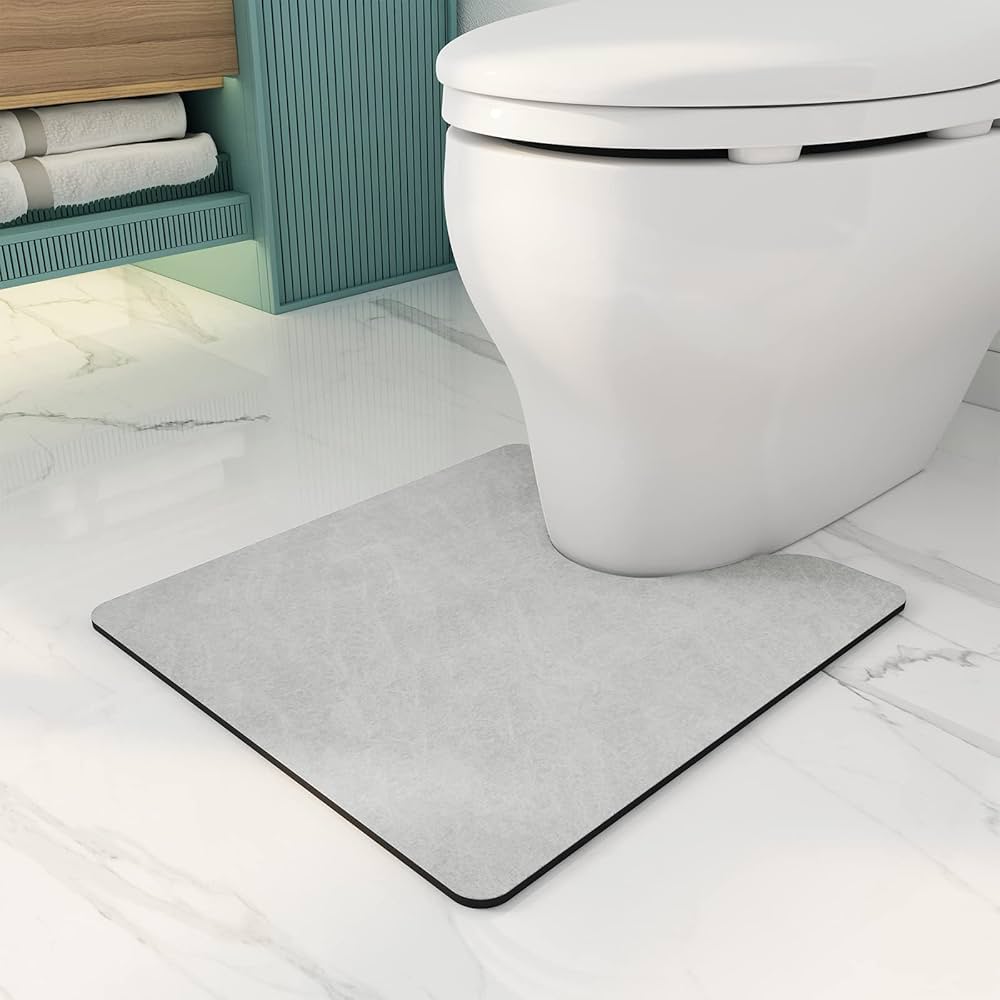
Troubleshooting Common Problems
Fix small issues before they turn big.
- Still damp after hours. Run another spin-only cycle, then hang in front of a fan. Add a dehumidifier if air is humid.
- Backing peeling or cracking. Retire high heat. Use air-only or low heat. If the backing flakes, it’s time to replace the rug.
- Curled edges. Warm on low for a few minutes, then cool under a flat weight on a table.
- Persistent odor. Wash with a small amount of vinegar during the rinse. Dry with airflow. If odor remains, replace to avoid spores.
- Color fading. Limit sun exposure and high heat. Wash in cold. Check the label for color-care tips.
I’ve saved many “lost cause” rugs with a simple fan plus dehumidifier setup overnight. It’s boring but it works.
Eco-Friendly Ways To Dry Faster
You can dry well without wasting energy.
- Use higher spin speeds. Spinning uses less energy than heating.
- Air plus fan. A box fan on low uses little power and speeds drying a lot.
- Dehumidify small spaces. A small unit in a half bath is very efficient.
- Sunlight in short bursts. Fifteen to thirty minutes outside can help, then finish in the shade.
- Wash less, refresh more. Between washes, shake, spot clean, and air out.
These steps lower energy use while keeping rugs fresh and safe.
Care Schedule And Replacement Signs
Keep a simple plan.
- After each shower. Hang the rug to breathe. Run the fan.
- Weekly. Air out in sun or on a rack for an hour.
- Biweekly. Wash if it sees heavy traffic. Otherwise, every 2–3 weeks.
- Monthly. Inspect backing and edges. Trim loose threads.
- Replace when. Backing cracks or flakes, odor returns fast, or the pile is flat and rough.
Most rugs last 6–24 months depending on material, use, and care.
Frequently Asked Questions
Q. How long does a bathroom rug take to dry?
Most rugs dry in 2–6 hours with good airflow. Thick memory foam can take 12–24 hours. A spin-only cycle plus a fan cuts time a lot.
Q. Can I put a rubber-backed rug in the dryer?
Yes, but only on low heat or air-only, and check it often. High heat can damage the backing.
Q. Why does my rug still smell after drying?
Moisture may be trapped inside. Rinse with a little vinegar, run an extra spin, and dry with a fan and dehumidifier. If odor persists, the rug may be past its best.
Q. Is sunlight safe for drying?
Short, gentle sun is fine. Long, intense sun can fade colors and weaken rubber. Use brief sessions and rotate the rug.
Q. What’s the fastest way to dry a thick rug?
Run a high-speed spin-only cycle, press with towels, hang with space on all sides, and point a fan at it. Add a dehumidifier in humid rooms.
Q. Can I dry a bathroom rug on a radiator or heater?
It’s not recommended. Direct heat can warp foam, crack backing, and pose a fire risk. Use airflow instead.
Wrap-Up And Next Steps
Drying a bathroom rug fast and safely is simple: remove as much water as you can, move dry air across both sides, and keep heat low. Use spin-only, fans, and dehumidifiers to get repeatable, odor-free results. With a small routine and a gentle touch, your rugs will last longer and your bathroom will smell fresher. Try the quick-start checklist on your next laundry day, and share what worked for you in the comments. Want more practical home care guides? Subscribe to get new tips each week.
Watch This Video on how to dry a bathroom rug
Related Posts
>>> See More Review: How Often Should You Wash Bathroom Rugs <<<
